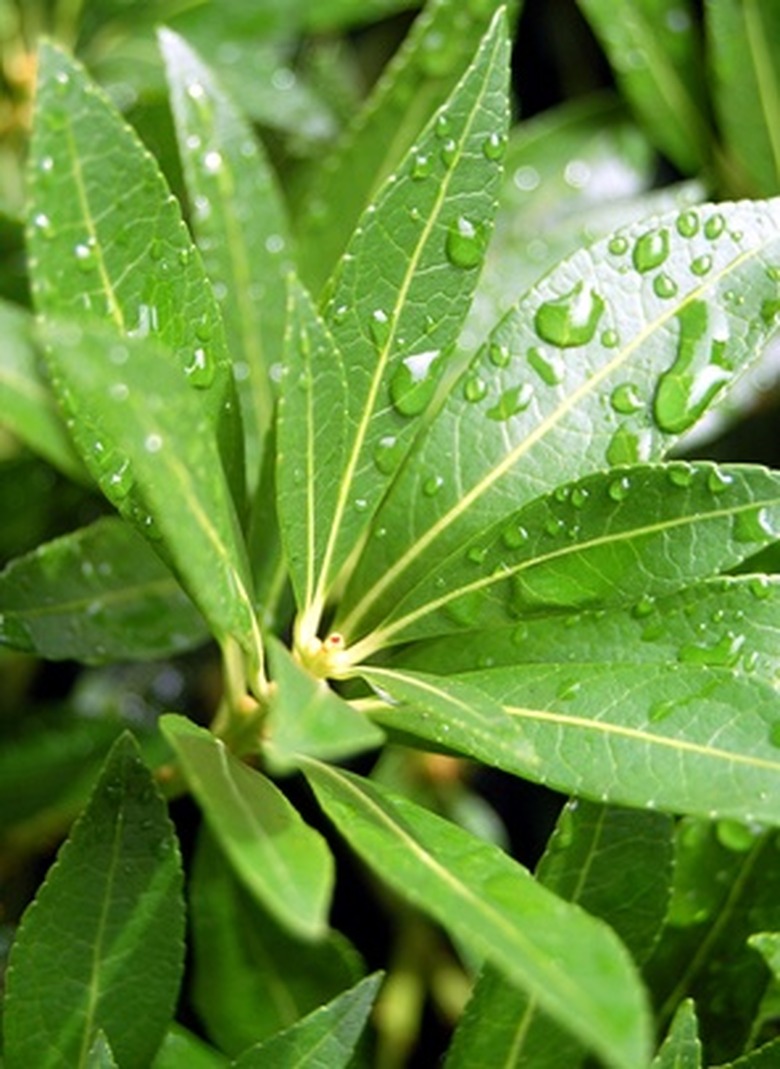Facts On Asexual Reproduction In Plants
There are two basic methods of reproduction for plants: sexual and asexual. Sexual reproduction requires the pollen from one plant to fertilize a seed in another plant in order to create a new plant that takes on characteristics of both parent plants. In asexual reproduction, one part of a single plant (such as the leaves, stem or roots) regenerates and becomes an independent plant. The specific characteristics of asexual reproduction produce offspring genetically identical to the parent.
Asexual Reproduction in Plants
Asexual Reproduction in Plants
There are six types of asexual reproduction in plants: layering, division, cutting, budding, grafting and micropropagation (or tissue culture). Some of these occur naturally, but others require outside forces (such as human intervention) to create a new plant.
Read more about the five types of asexual reproduction.
Layering may occur naturally or can be encouraged by manipulating the plant and its environment. It works best on plants with branches that bend easy. Simple, compound and serpentine layering involve bending a section of a plant's stem and burying it to encourages roots to grow from the stem. Once these roots form, the new plant can be separated from the parent.
Asexual Reproduction Details
Asexual Reproduction Details
Mound and air layering require more intervention. In mound layering, the plant is cut back and soil is mounded over new shoots. After the shoots grow and go dormant, new plants can be removed and replanted. Air layering is done above ground. The stem is girdled (cut), wrapped with an appropriate media (such as peat moss) and covered in plastic. After roots grow on the stem, they are cut off and replanted.
Some plants reproduce naturally through division. When a plant has more than one rooted crown, such as those with spreading or clumping root systems, each crown can grow into a new plant. Physically dividing these plants provides each with more room for the roots to grow and makes the plant stronger. Plants with spreading roots can be divided by gently pulling them apart while those with clumping roots may need to be cut apart before replanting.
Read more about the reproduction in plant cells.
A number of plants have fleshy structures rather than roots below ground. These include bulbs, corms, tubers and rhizomes. As they mature, new structures grow on the old ones. These can be gently separated and replanted to grow new plants. Tubers such as potatoes grow buds on the surface which if removed and replanted, develop into new plants.
Human-Assisted Asexual Reproduction in Plants
Human-Assisted Asexual Reproduction in Plants
Centuries ago, humans learned that they can use a portion of a plant to grow a new one. Cutting is the most common method used. In this process, a part of the plant ( a stem, a leaf or a root) is cut off and used as the base for a new plant. The cut piece is placed either in a rooting medium or water to encourage new roots to grow.
A process that can be traced back to ancient China and Mesopotamia, grafting is generally used when the desired plant does not readily produce new roots. Grafting involves the attachment of a plant part to another plant and generally works only when the two plants are closely related. The upper part of one plant (called a scion) is attached to the lower section (or rootstock) of another. Since this is only successful with certain combinations of plants and under certain conditions, this is generally only used by experienced gardeners.
Plants can also be produced in a lab. In micropropagation, scrapings from a plant are used as the foundation for new plant life. These plant pieces are sterilized and placed in specially-designed containers where they are cultured in a controlled environment. This process can be used in places where conditions wouldn't allow a certain plant to grow or where traditional methods are impossible. It is faster than traditional methods. It also results in pest-free and disease-free plants.
Advantages of Asexual Reproduction
Advantages of
Asexual Reproduction
Since asexual reproduction results in genetically identical plants, the positive traits of a plant are guaranteed. Naturally-occurring asexual reproduction is quicker and easier than sexual reproduction since there is no need to wait for fertilization to occur. These plants also tend to have a shorter maturity period, which results in the production of more offspring in less time.
References
- Weber State University: Plant Form and Function
- University of Maine: Plant Propagation
- NC State Extension: Grafting and Budding Nursery Crop Plants
- University of Washington: Layering and Grafting for Native Plant Propagation
- University of MiInnesota Extension:How and when to divide perennials
- University of Illlinois Extension: Bulb Basics
Cite This Article
MLA
Yavorski, Kimberly. "Facts On Asexual Reproduction In Plants" sciencing.com, https://www.sciencing.com/asexual-reproduction-plants-6462402/. 30 July 2019.
APA
Yavorski, Kimberly. (2019, July 30). Facts On Asexual Reproduction In Plants. sciencing.com. Retrieved from https://www.sciencing.com/asexual-reproduction-plants-6462402/
Chicago
Yavorski, Kimberly. Facts On Asexual Reproduction In Plants last modified March 24, 2022. https://www.sciencing.com/asexual-reproduction-plants-6462402/
